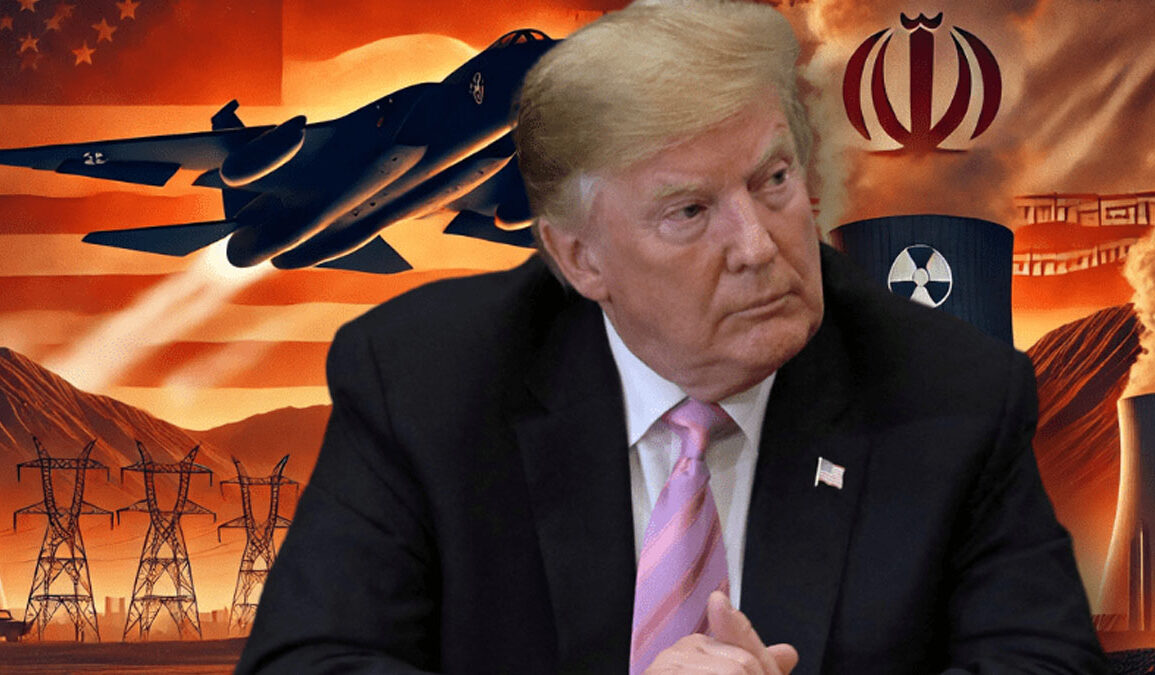President-elect Donald Trump is reportedly weighing the possibility of preemptive airstrikes on Iran’s nuclear facilities to prevent Tehran from developing nuclear weapons. This controversial consideration underscores the escalating tension surrounding Iran’s nuclear ambitions and the complex geopolitical ramifications of any potential military action.
What Do We Know About Iran’s Nuclear Program?
Iran’s nuclear program has long been a flashpoint in international relations. According to reports, Iran possesses enough highly enriched uranium to construct up to four nuclear bombs. This stockpile includes 60% near-weapons-grade fissile material, which could be converted into weapons-grade fuel in mere days. U.S. intelligence estimates indicate that while it might take Iran several months to field a functional nuclear weapon, the threshold for weaponization is alarmingly close.
Despite Iran’s claims that its nuclear activities are purely for civilian purposes, evidence from the International Atomic Energy Agency (IAEA) and U.S. intelligence suggests otherwise. Iran’s nuclear program, which included an organized military component until 2003, has continued to evolve, with Tehran increasingly unwilling to engage in diplomatic measures to curtail its capabilities. A recent U.S. intelligence estimate noted that Iran’s advancements have prepared it to produce more than 12 nuclear bombs if it decides to pursue weaponization.
Does Iran Already Have Nuclear Weapons?
Currently, best intelligence estimates say Iran does not possess operational nuclear weapons. However, its enriched uranium stockpile and technological progress indicate a strategic readiness to pivot toward nuclear armament. Experts warn that while Iran is not actively constructing a bomb, it has laid the groundwork to do so at short notice. “Iran does not have much room to go before they hit [Israel’s] red lines, and they still seem intent on escalating further,” said Gabriel Noronha, a former State Department official who worked on Iran policy.
Iran’s Supreme Leader Ayatollah Ali Khamenei has openly declared hostility toward Israel, while Iranian President Masoud Pezeshkian has signaled mixed messages, expressing both defiance and openness to negotiations. This duality raises questions about Tehran’s ultimate objectives and the sincerity of its diplomatic overtures.
Trump’s Approach: Military Force or Diplomacy?
Trump’s negotiating style has been to propose possible solutions that are entirely unsatisfactory to the other side, with the goal of bringing the other side to the table. This is no different. While Trump is perfectly capable of implementing this measure, and will if Iran does not respond, it is not his first choice, and indeed not likely to occur.
President-elect Trump’s transition team is reportedly developing a “maximum pressure 2.0” strategy, building on his first-term sanctions campaign. This strategy includes bolstering U.S. military presence in the region, arming Israel with advanced weaponry, and leveraging the threat of military force to compel Iran to negotiate. “If you were going to actually do something to neutralize the nuclear-weapons program, this would be it,” remarked Mark Dubowitz, a policy expert and Trump confidant.
While Trump has expressed a preference to avoid all-out war, he has signaled openness to supporting Israeli-led strikes on Iran’s nuclear facilities. Reports indicate that plans being considered involve direct U.S. participation in targeting key Iranian sites like Natanz, Fordow, and Isfahan. Such operations, however, face enormous uncertainties due to the fortified and underground nature of many of Iran’s nuclear facilities.
Additionally, Iran’s alleged plot to assassinate Trump following the 2020 killing of Iranian commander Qassem Soleimani has reportedly influenced the incoming administration’s hardline stance. “Iran is actively trying to kill President Trump,” a transition official stated, underscoring the charged and personal dimension of U.S.-Iran tensions.
The stakes surrounding Iran’s nuclear program and Trump’s response could not be higher. While a preemptive strike might delay Iran’s nuclear ambitions, it risks setting off a cascade of unintended consequences with devastating regional and global implications. From the threat of widespread conflict to economic shocks and diplomatic fallout, the ramifications of military action would reverberate far beyond the Middle East.
NP Editor: In our opinion, the big factors in this decision will be:
a) Do we really know whether Iran has completed a weapon, that might be used in retaliation? Even a single test model might be devastating if set off in the U.S. Our intelligence services say no, but what access do we really have?
b) Do we indeed know where all of the nuclear research and production facilities are in Iran? If we miss some, the consequences could be dire.
Israel has already demonstrated that Iran’s defenses are not that tough to get through, and ours would breeze through even more easily. And in fact, they may have already taken out many of the nuclear research sites. But the risks for Trump are high.
This would be a disaster for the incompetent Biden Administration, but Trump intends to win, and he probably can.








